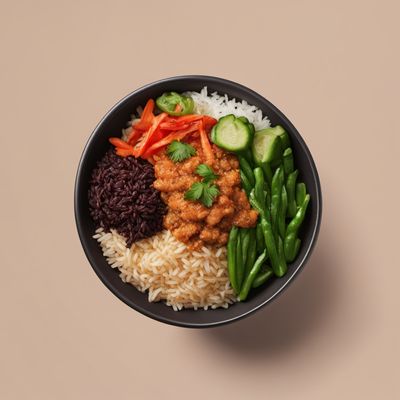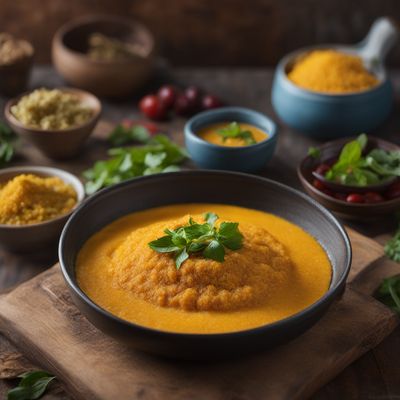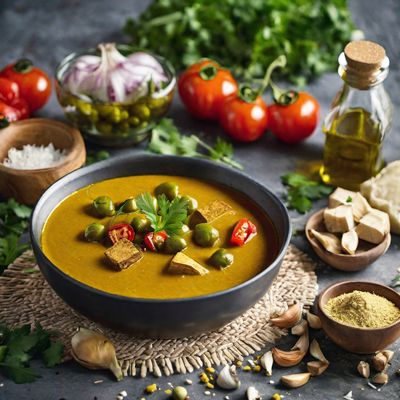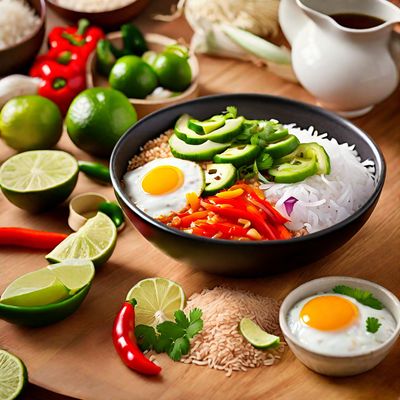
Ingredient
Fruit or fruit-vegetable puree
The Versatile Essence of Pureed Fruits and Vegetables
Fruit or fruit-vegetable puree is a smooth and creamy blend of fruits or a combination of fruits and vegetables. It is made by blending or processing the ingredients until they reach a smooth consistency. The puree has a vibrant color and a velvety texture, making it easy to incorporate into various recipes. It can be used as a base for sauces, soups, smoothies, desserts, and even as a natural sweetener in baked goods. The puree retains the natural flavors and nutrients of the fruits and vegetables, making it a healthy and flavorful addition to any dish.
Origins and history
The practice of pureeing fruits and vegetables dates back centuries, with various cultures incorporating purees into their traditional cuisines. Pureed fruits were commonly used in ancient Roman and Greek cooking, while pureed vegetables have been a staple in Indian and Middle Eastern cuisines for centuries. The technique of pureeing fruits and vegetables gained popularity in the 20th century with the advent of blenders and food processors, making it easier for home cooks to create smooth and creamy purees.
Nutritional information
Fruit or fruit-vegetable puree is a nutrient-dense ingredient, packed with vitamins, minerals, and antioxidants. It is low in calories and fat, making it a healthy addition to a balanced diet. The puree is a good source of dietary fiber, which aids in digestion and promotes satiety.
Allergens
Fruit or fruit-vegetable puree may contain allergens depending on the fruits or vegetables used. Common allergens associated with purees include strawberries, kiwis, and bananas. Individuals with known allergies should check the ingredient list or consult with a healthcare professional before consuming.
How to select
When selecting fruit or fruit-vegetable puree, opt for brands that use high-quality, fresh ingredients. Look for purees that are free from added sugars, preservatives, and artificial flavors. Check the ingredient list to ensure that the puree contains only fruits or vegetables without any additional additives.
Storage recommendations
Fruit or fruit-vegetable puree should be stored in an airtight container in the refrigerator. It can be kept for up to 5 days. To extend its shelf life, the puree can be frozen in ice cube trays or freezer-safe containers for up to 3 months.
How to produce
Amateur cooks can easily produce fruit or fruit-vegetable puree by selecting ripe fruits or vegetables, removing any seeds or pits, and blending them in a food processor or blender until smooth. For a smoother consistency, strain the puree through a fine-mesh sieve to remove any fibrous bits.
Preparation tips
Fruit or fruit-vegetable puree can be used in a variety of ways. It can be added to smoothies, yogurt, oatmeal, or used as a topping for pancakes or waffles. In savory dishes, it can be used as a base for sauces, marinades, or dressings. When using puree in baking, reduce the amount of liquid in the recipe to compensate for the added moisture. Experiment with different combinations of fruits and vegetables to create unique flavor profiles.
Culinary uses
Fruit or fruit-vegetable puree is commonly used in desserts such as fruit tarts, mousses, and sorbets. It can also be used as a filling for cakes or pastries. In savory dishes, puree can be used as a base for sauces, soups, or as a glaze for roasted meats. It can also be incorporated into marinades or dressings to add a burst of flavor.
Availability
Fruit or fruit-vegetable puree is commonly available in grocery stores, supermarkets, and online retailers. It can also be made at home using fresh fruits and vegetables.
More ingredients from this category

Marmalade
The Zesty Preserve: Marmalade

Fruit jelly
The Sweet Delight: Exploring the World of Fruit Jelly

Fruit preparations for fillings and/or flavouring
Bursting with Flavor: Exploring Fruit Preparations for Irresistible Fillings and Flavourings

Compote of fruit / vegetables
Sweet and Tangy Medley

Jam of fruit / vegetables
The Sweet Symphony of Fruit and Vegetable Jam

Fruit dessert thickened
The Art of Creating Luscious Fruit Desserts
Recipes using Fruit or fruit-vegetable puree » Browse all

Nouvelle Cuisine Curry
Elevated Indian Curry with a Nouvelle Twist

Hokkien Fried Rice with Shrimp and Vegetables
Savory Delights: Hokkien Shrimp Fried Rice

French Guianan Pastel de Belém
Exquisite French Guianan Delight: Pastel de Belém

Fast and Flavorful Rice Bowl
Savory Rice Bowl Delight

Kimchi Puerto Rican Style
Tropical Twist Kimchi: A Puerto Rican Delight

Manchu-style Fried Rice
Imperial Delight: Manchu-style Fried Rice

Phutu - South African Cornmeal Dish
Savory Cornmeal Delight: A Taste of South Africa

Helado de Paila - Ecuadorian Traditional Ice Cream
Andean Delight: A Taste of Ecuadorian Helado de Paila

Haute Cuisine Curry
Elevated Indian Curry: A Haute Cuisine Delight

Dominican Pastila
Tropical Delight: Dominican Pastila with a Twist

Thai-Inspired Breakfast
Spicy Morning Delight: Thai-Inspired Breakfast

Molecular Coyotas
The Futuristic Twist on Traditional Coyotas